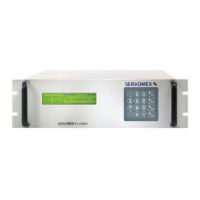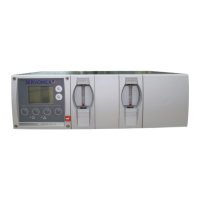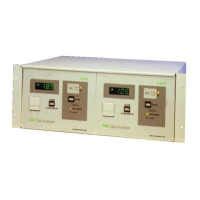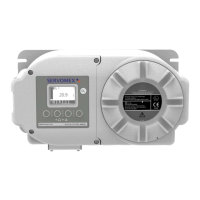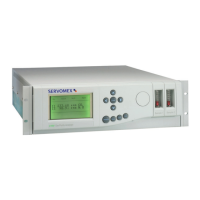3.19
component 3
Autocalibration
status;
1 byte or
15 bytes
Indicates Autocalibration phase.
0 = Not in Autocalibration
1 = In span preflush
2 = In zero cal
3 = zero corrected. This is then followed by
two additional values, which are separated
by commas, each 6 bytes that represent the
zero before calibration and the zero after
calibration respectively.
4 = In span cal
5 = span corrected. This is then followed by
two additional values, which are separated
by commas, each 6 bytes that represent the
span before calibration and the span after
calibration respectively.
6 = In post flush
<CR><LF> 2 bytes Carriage return and Line Feed characters
(ASCII codes 13 and 10 respectively).
Note: End of 2550 specific data
fault status; 1 byte Set to 'F' when fault is active, <space> when
no fault active
fault numbers; List of fault numbers of active faults,
separated by ','. Fault numbers are defined
in table 3.7.
<CR><LF> 2 bytes Carriage return and Line Feed characters
(ASCII codes 13 and 10 respectively).
Chopper
temperature; ºC;
Max 4 bytes Chopper temperature as displayed in
diagnostic display.
Compensation
temperature; ºC;
Max 4 bytes Compensation (detector) temperature as
displayed in diagnostic display.
cell/sample
temperature; ºC;
Max 5 bytes Cell/sample temperature as displayed in
diagnostic display.
source voltage; V; Max 5 bytes Source voltage as displayed in diagnostic
display.
Intensity 1;Intensity 2;
Intensity 3;Intensity 4;
Intensity 5;Intensity 6;
Max 6*6
bytes
Intensity channel values – diagnostic values
representing up to six input positions used
for measure and reference signals.
<CR><LF> 2 bytes Carriage return and Line Feed characters
(ASCII codes 13 and 10 respectively).
Table 3.6 – Serial Data Format
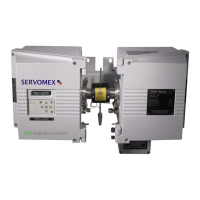
